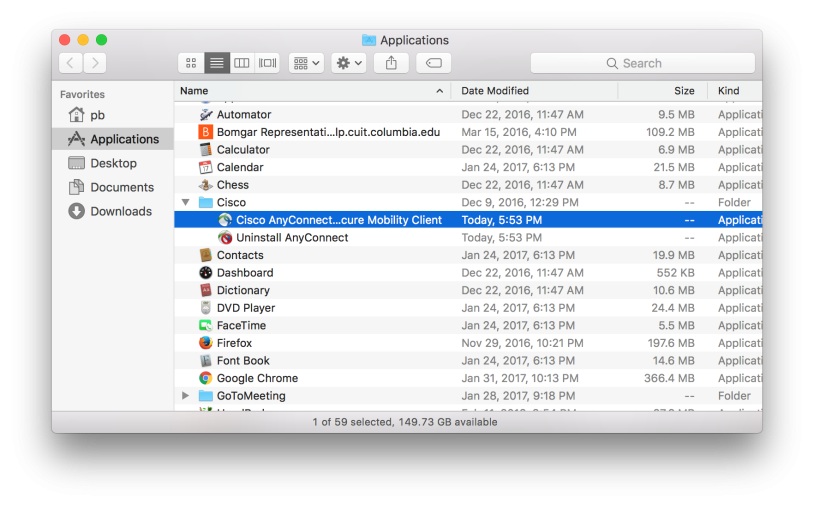Cisco Anyconnect Vpn Client Installation Problems
When prompted with Windows UAC (User Access Control) you need to allow to install this software. Download the VPN installer from MIT's download page, Cisco AnyConnect VPN Client for Windows. Note: MIT certificates required. Solved: Hello all, this is my first post and I hope that somebody can help me with my problem. I'm trying to install AnyConnect Secure Mobility Client 3.0.3054 on my PC (Windows 7 professional, 32-bit operating system) and I get the following. The virtual adapter of Cisco VPN is an internal tool used to get connected to a VPN gateway. As the Cisco VPN client is not compatible with Windows 10, its virtual adapter is failed to be enabled when it tries to be connected to a VPN gateway. So we have to customize this virtual adapter to make Cisco VPN client working in windows 10.

Table of Contents
Some USC online-based services require access through on-campus USC Secure Wireless or a wired network connection. USC offers a Virtual Private Network (VPN) connection to provide secure remote access to these services when you are off-campus. When off-campus, you must use the Cisco AnyConnect VPN client to access internal USC systems handling confidential or sensitive data, such as Student Information System (SIS), and file servers for specific schools and departments. The Cisco AnyConnect Secure Mobility client is a web-based VPN client that does not require user configuration.
This webpage provides instructions on how to install and connect to the Cisco AnyConnect Secure Mobility client for Windows 10 operating systems, including both 32- and 64-bit versions.
Login and Download VPN Software
- Connect to your local network.
- Go to https://vpn.usc.edu/.
- On the login screen, enter your USC NetID and Password.
- Click Login.
- After you have logged in, click AnyConnect on the left.
- In the middle of the screen, click Start AnyConnect.
- On the following Download & Install screen, click the Download for Windows button. You may be prompted to save the file, or it may automatically download to your Downloads folder.
Install AnyConnect VPN Client
- Search for the downloaded file on your computer and double-click it.
- You may see the file in the bottom left-hand corner of your screen.
- If you do not see it there, look in your Downloads folder.
- A Cisco AnyConnect Secure Mobility Client Setup pop-up window appears. Click Next. This will initiate the installation.
- On the End User License Agreement window, select I accept the terms in the License Agreement.
- Then click Next.
- Click Install. The installation will begin.
- If prompted to allow the installation, click Yes.
- If prompted, enter your computer’s Admin ID and password. This is the ID and password you use to log into the computer.
- When the installation is complete, click Finish.
Connect with AnyConnect VPN
- Search for the Cisco AnyConnect Secure Mobility Client app on your desktop (Type “Cisco AnyConnect” in your computer search bar OR select the Windows Start button and search in the menu items).
- Click to open the application.
Cisco Anyconnect Vpn Client Error
- In the VPN pop-up window, enter: vpn.usc.edu
- Then click Connect.
- On the Welcome screen enter your USC NetID and Password.
- Click Sign in.
- On the Please verify your identity screen, click on Send Me a Push, Call Me, or Enter a Passcode to complete the Duo Two-Factor Authentication (2FA) process.

Cisco Anyconnect Vpn Client 4.7
- You are now connected to the USC network through the Cisco AnyConnect VPN client.
Getting Help
If you need help installing or connecting to your Cisco AnyConnect Secure Mobility client, contact the ITS Customer Support Center.